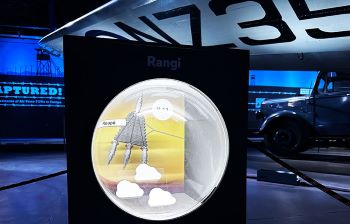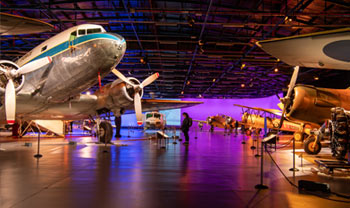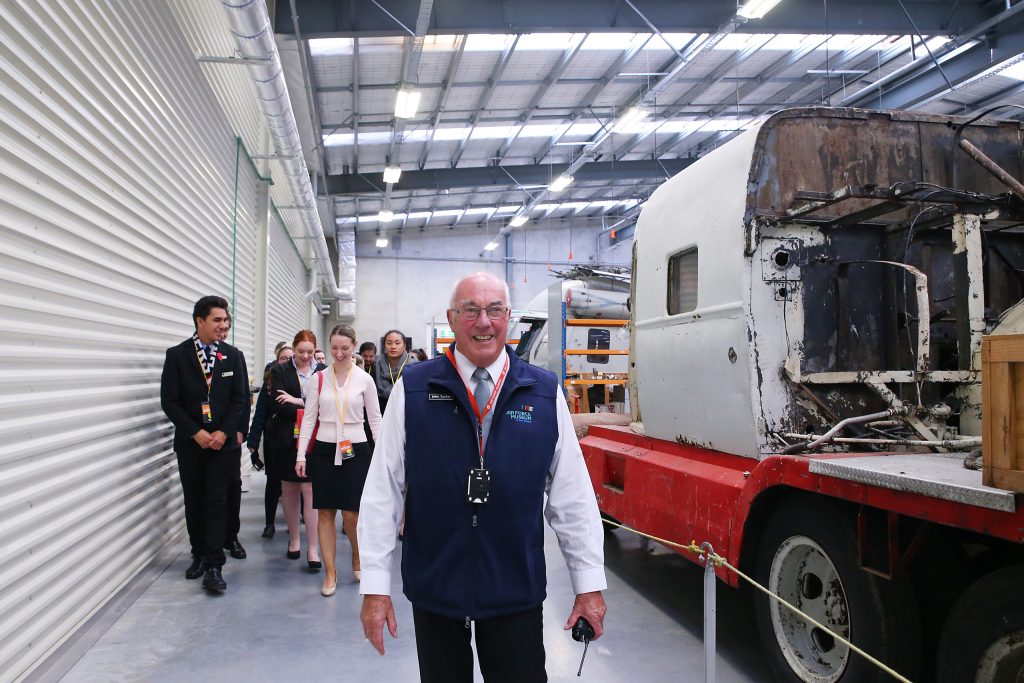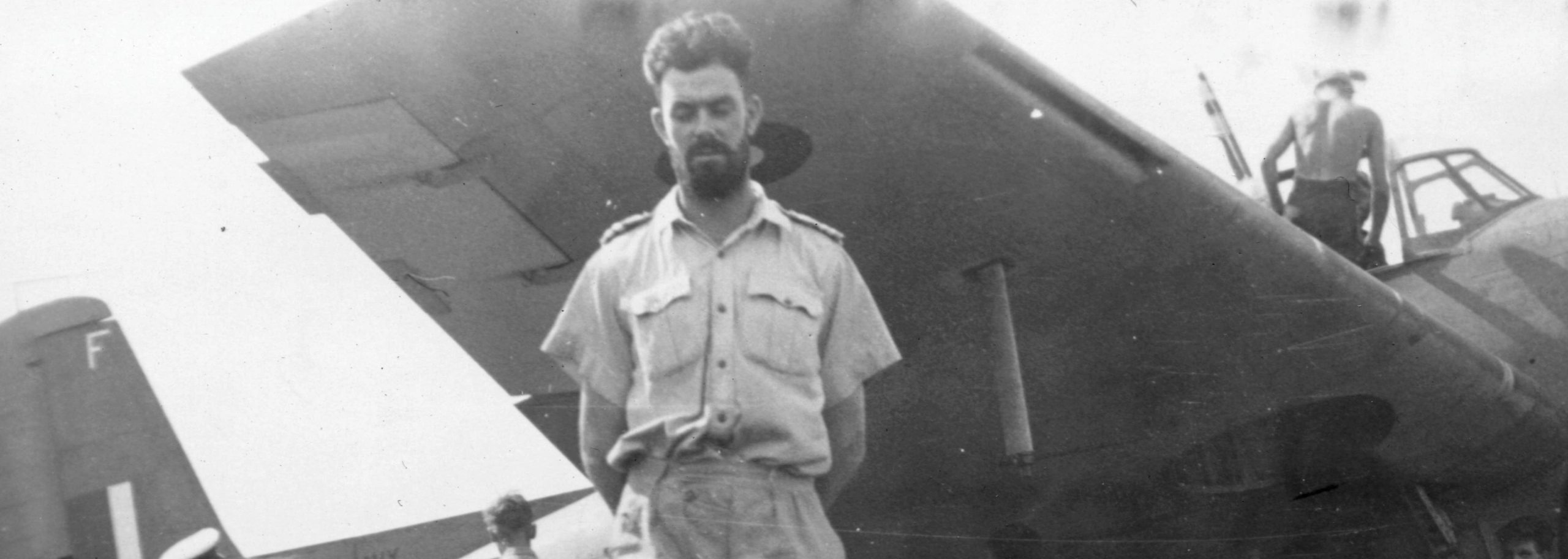We’re pleased to release a highly significant addition to our photo collection – an album featuring the photographs of World War Two Fleet Air Arm (FAA) pilot Kenneth Francis ‘Bruce’ Petrie.
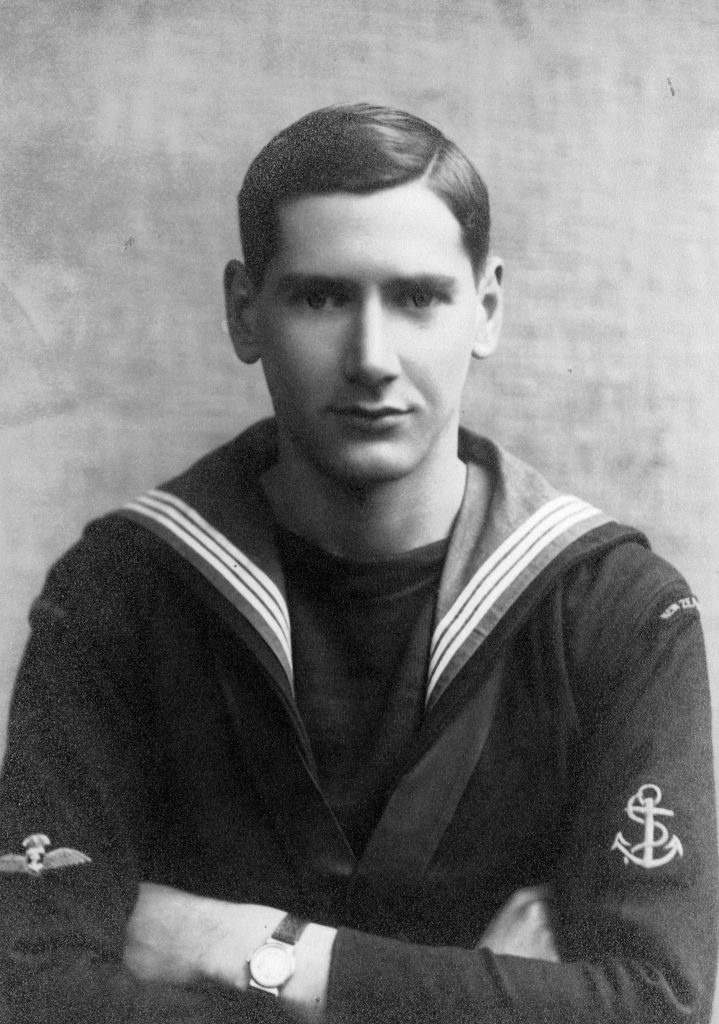
Bruce Petrie joined the New Zealand Division of the Royal Navy (RN) in 1941 and sailed to England to begin training as a pilot in the FAA. He was one of only about 600 New Zealanders who flew as air crew on operations with the FAA in World War Two.
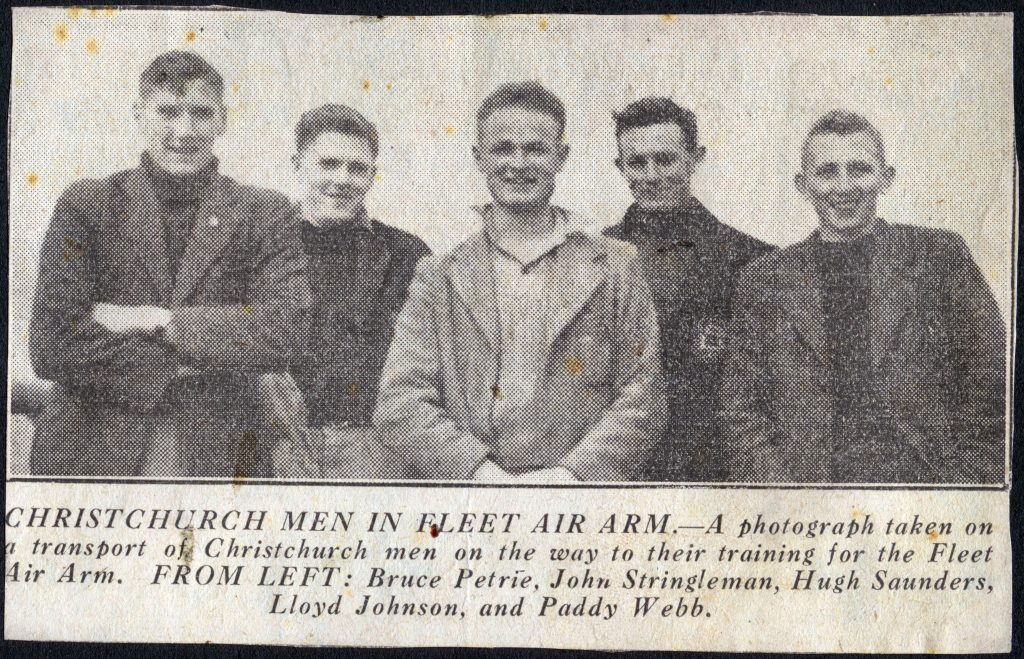
Image: ALB10344117001
Bruce began his flying training in Tiger Moth aircraft before progressing to the more advanced Miles Master. In May 1942 he was posted to No. 786 Squadron in Scotland, flying Swordfish and Albacore aircraft, before a period with No. 756 Squadron flying Percival Proctor aircraft.
Bruce was sent to US Naval Air Station (NAS) Quonset Point, Rhode Island, USA, then NAS Norfolk, Virginia, where he converted to fly Grumman Avenger aircraft.
His story highlights an interesting footnote in aircraft naming history: The RN originally called Grumman Avenger aircraft Tarpons, before adopting the name Avenger in early 1944, after it was considered best to streamline aircraft naming between the Allies. Bruce Petrie uses both names in his log book, depending on time and circumstance, but all photographs in the collection have been labelled Avenger, for ease of cataloguing.
In January 1943 Bruce was posted to No. 832 Squadron on board the Illustrious-class aircraft carrier HMS Victorious, which at the time was attached to the US Third Fleet in the south-west Pacific theatre.
Bruce makes some notes in his log book at this time: “Left Pearl Harbour 0800 8th May [1943] for Noumea, New Caledonia – accompanied by USS “North Carolina” and US Destroyers “Comverse”, “Pringle”, and “Smith.” Joined on 13th May by US Destroyers “Case” and “Dunlop.” Arrived at Noumea on May 17th.”
“Left Noumea 1430 May 17th with United States Task Force for Coral Sea. With us are the aircraft carrier USS “Saratoga”, battleships USS “Indiana”, “Massachusetts”, “North Carolina”, AA Cruiser “San Juan”, and 11 destroyers.”
Bruce was flying from the USS Saratoga for part of this period in support of the invasion of the Solomon Islands.
“Left Noumea 0630, June 27th with Task Force – covering force for operations in Solomons Force. Consists of carriers “Victorious” and “USS Saratoga,” battleships USS “North Carolina,” “Massachusetts,” and “Indiana,” light cruisers “San Diego” and “San Juan,” 12 destroyers and a tanker. For this operation, 832 Sqdn is operating from “Saratoga.” ”

Image: 2010-344.84
HMS Victorious was re-called to the Atlantic and sailed through the Panama Canal via Pearl Harbour, then to the Orkney Islands in Scotland where the Victorious and Bruce spent the next four months in and around the British Isles.
“Left Clyde March 3rd [1944] for Mediterranean, in convoy with Nigeria, Begum, Athene, Athling, and transport (Strathnaver). Arrived Port Said, Egypt, 16th March. Went through Suez Canal 17th Mar. Left Suez 23rd Mar. for Aden – arrived 27th. Left for Colombo, Ceylon [now Sri Lanka], on Mar 28th. Arrived April 4th.”
Still with No. 832 Squadron, Bruce was now flying from either HMS Illustrious or HMS Begum, flying operations against Java, often returning to Colombo for replenishment and refueling. In August 1944 they sailed as far west as Kenya and the Seychelles on anti-submarine patrols.

Image: ALB10344118019
In November 1944 Bruce was on a well-earned three months’ leave in New Zealand. When he returned he was posted to No. 756 Squadron in Ceylon, where he stayed from mid-April to Mid-June 1945, and was then transferred to No. 820 Squadron on HMS Indefatigable.
On 24 July 1945 he recorded in his log book “Strike on CVE in Inland Sea between Shikoku and Honshu (Japan). Two of four 500lb G.P.s direct hits. Nose fused.” This was Bruce’s first operation against mainland Japan.
Under the entry for a flight on 30 July, when Bruce was flying Avenger JZ534 on a strike on Maizuru Naval Base, he comments: “Fujiyama a great sight.”
On 9 August, he writes: “Strike on Matsushima airfield – dispersals and installations. Target well plastered.” There’s a side note: “Much haze. Seafire and Firefly escort. Flak negligible.”
The war was over soon after, with Japan surrendering on 15 August. Bruce’s last operation was on 13 August 1945, against a chemical works at Onohama, north of Tokyo.
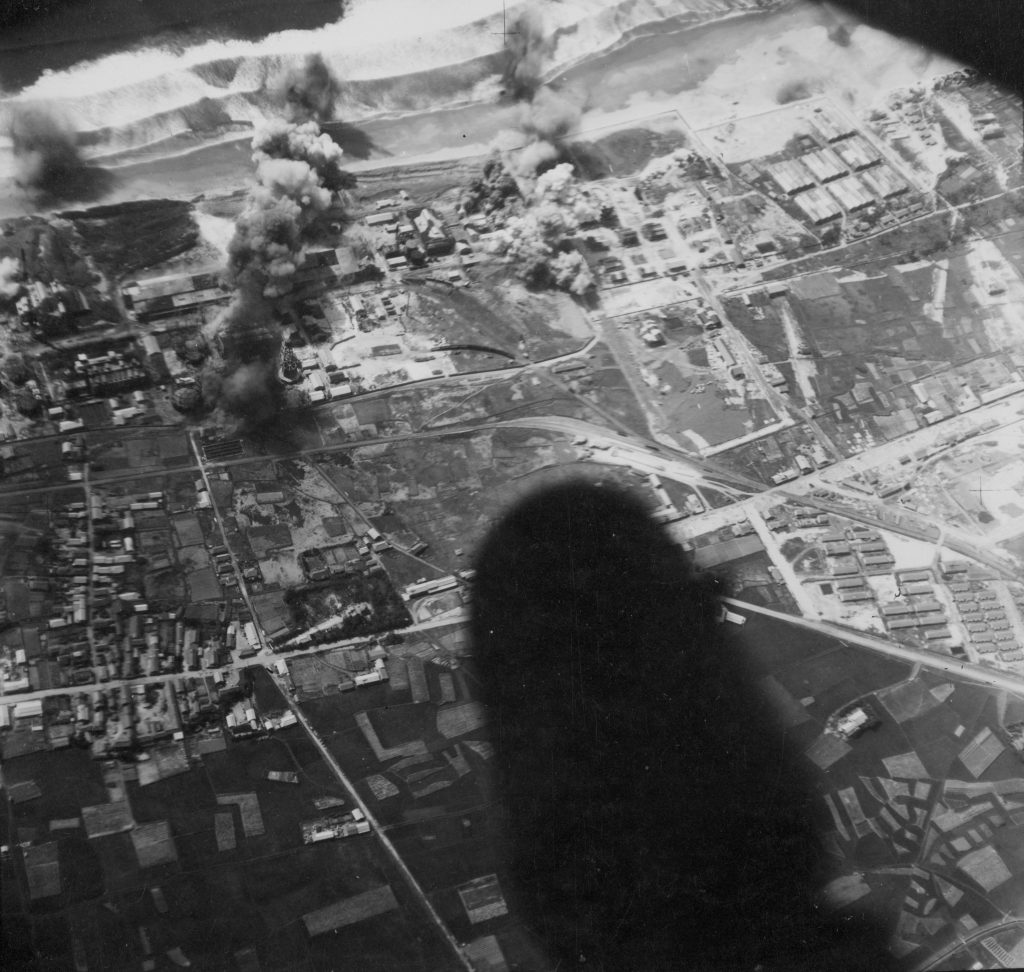
Image: 2010-344.10
When asked about Hiroshima, in an interview with the Navy Museum, Auckland, Bruce said that “…under no circumstances were any aircraft to go near Hiroshima… Of course as soon as we heard we knew why we weren’t allowed there. I suppose they wanted to assess the damage from the bomb.”
On 29 August, again flying Avenger JZ534, Bruce and his crew flew his second-last flight; “Food dropping to P.O.Ws at Yokkaichi, near Nagoya. Search to east for further camps. Very interesting trip.”

Image: 2010-344.32
His last flight was flying this same Avenger “when I had a catapult take off” from HMS Indefatigable to Nowra, south of Sydney.
Bruce Petrie’s collection has filled a significant gap in the Air Force Museum of New Zealand’s photo archive – we’d like to thank the Petrie family for donating these precious items.
We hope you enjoy looking through the 163 images from the Bruce Petrie personal collection, which can be found here.
If you would like to consider donating a collection you can find out how here.
